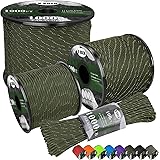Imagine finding yourself unexpectedly deep in the wilderness, the trail suddenly vanishing, and daylight fading fast. That sudden chill of realization, “I’m lost,” can trigger a cascade of urgent priorities, with securing food often near the top. The captivating video above demonstrates a core survival skill: how to improvise and successfully procure a meal. It specifically showcases the practical art of a survival catch and cook rock bass, transforming a basic fishing kit into a life-sustaining resource.
This situation isn’t just a hypothetical scenario for outdoor enthusiasts; it’s a testament to human ingenuity and resilience. The ability to find, catch, and prepare food with minimal gear can make all the difference in an emergency. Building upon the practical demonstrations in the video, this article will delve deeper into the essential techniques and broader considerations for effectively catching rock bass for survival and transforming them into a nourishing meal.
Mastering Emergency Fishing: Catching Rock Bass for Survival
When unexpected circumstances leave you dependent on your wits, understanding reliable food sources becomes paramount. Rock bass, as expertly demonstrated in the video, are often an excellent choice for a survival fishing scenario due to their widespread availability and eager biting nature. These robust little fish are not only a welcome source of protein but also relatively easy to locate and catch, even with improvised gear.
1. **Understanding the Rock Bass:** Rock bass (Ambloplites rupestris) are a type of sunfish, typically found throughout central and eastern North America. They thrive in rocky, clear water environments in lakes, rivers, and streams, often preferring cooler temperatures. Identifying them is usually straightforward due to their reddish eyes and mottled, dark olive-brown bodies, making them distinct from other panfish. Their aggressive feeding habits mean they are less finicky than other species, increasing your chances of a successful catch when every meal counts.
2. **Improvising Your Fishing Gear:** As shown in the video, a minimalist fishing kit often included in a survival lighter or a small tin can be incredibly effective. This usually consists of fishing line, a few hooks, and perhaps some small weights. To transform these components into a functional setup, consider finding a sturdy, flexible stick approximately two to four feet long to serve as a makeshift rod. Wrap your fishing line securely around one end of the stick, ensuring multiple tight turns, and then tie your hook firmly to the working end of the line using a reliable knot like a Palomar or improved clinch knot. You can learn these knots beforehand for preparedness. Sometimes, a simple hand-lining technique, where you hold the line directly, can also work if no suitable stick is available.
Finding the Perfect Spot: Where Rock Bass Lurk
Successfully catching any fish, especially rock bass, hinges on knowing where they prefer to hide and feed. These fish are true to their name, favoring rocky bottoms and submerged structures. Understanding their preferred habitat greatly increases your chances of a catch, allowing you to maximize your limited time and resources. Prioritizing efficient angling is crucial in a survival situation.
3. **Locating Prime Rock Bass Habitat:** As highlighted in the video, focusing your efforts around larger rocks is a smart strategy. Rock bass seek shelter and ambush points among these structures, especially in areas with a slight current or deeper pockets. Look for submerged logs, fallen trees, brush piles, or even dense aquatic vegetation near rocky areas. These features provide cover from predators and offer excellent hunting grounds for the bass. Clear, flowing water with a gravel or rocky bottom is generally a good indicator of their presence.
4. **Sourcing Natural Bait:** The transcript mentions finding another worm, which is an excellent, readily available bait. Earthworms, grubs, crickets, grasshoppers, and small aquatic insects are all highly effective for rock bass. You can often find worms by turning over rocks, decaying logs, or digging in damp soil near water sources. Look for insects under rocks or in tall grasses. Even small pieces of other fish or game, if you have any, can serve as bait in a pinch. The key is to present your bait naturally and enticingly, mimicking what rock bass typically consume.
Securing Your Catch: Techniques for Survival Fishing
Once you have your improvised gear and bait, the next step is the actual fishing. Persistence and patience are vital, as is understanding simple yet effective presentation techniques to entice a bite. Even with limited equipment, a strategic approach can yield significant results, providing much-needed sustenance.
5. **Presenting Your Bait Effectively:** Drop your baited hook directly into the pockets or crevices around the rocks where you suspect rock bass are hiding. Let it sink naturally. Often, a slight jiggling or slow retrieval motion can imitate a struggling insect or worm, attracting the fish’s attention. Rock bass are not particularly shy, so they will often strike quickly if your bait is presented well. The video shows success with a simple dip under a rock, emphasizing that elaborate techniques are not always necessary for these opportunistic feeders.
6. **Reeling in Your Dinner:** When you feel a tug, set the hook firmly but not so hard that you break your improvised line or pull the hook free. With a hand-lining setup, a gentle but quick pull upward will usually suffice. These fish, while small, can put up a decent fight, so be ready to maintain tension. Once you have a fish on the line, carefully bring it to shore or lift it from the water, taking care not to lose your precious catch. The video demonstrates the rapid success that can be had, netting “four smaller ones” for a “decent meal.” This quick accumulation of protein is invaluable.
Preparing Your Survival Fish: Rock Bass for the Fire
Catching fish is only half the battle; proper preparation ensures it’s safe and palatable to eat. The video efficiently demonstrates key steps like descaling and gutting, which are critical for hygiene and taste. Expanding on these techniques with a few extra considerations can further enhance your survival meal.
7. **Descaling Your Rock Bass:** Descaling removes the outer protective layer of scales, which are unpleasant to eat. As the video illustrates, you can often use your thumb to push against the scales, starting from the tail and working towards the head. Another effective method is to use the dull side of a knife or even a sharp-edged rock to scrape the scales off. Ensure you do this away from your cooking area to maintain cleanliness. After descaling, a quick rinse in clean water will remove any loose scales and slime, preparing the fish for the next step.
8. **Gutting with Improvised Tools:** The video shows attaching an Exacto knife blade to a stick for gutting, a clever improvisation. If you have a small knife, that is ideal. Otherwise, a sharp-edged rock, a piece of sharpened metal, or even a sturdy, thin stick can be used to make an incision. Start by making a shallow cut from the vent (the anus) up to the gills. Carefully open the cavity and remove all the internal organs. Pay close attention to removing the dark bloodline along the backbone, as this can impart a bitter taste. Rinse the fish thoroughly inside and out with clean water to remove any remaining guts or blood. This step is crucial for both hygiene and flavor.
Cooking in the Wild: Transforming Catch into Sustenance
With your rock bass cleaned and prepared, it’s time to cook. In a survival scenario, cooking methods will be primitive but effective. The goal is to cook the fish thoroughly to kill any parasites or bacteria and make it more digestible and appealing. Simple cooking can turn a raw catch into a satisfying and energy-giving meal.
9. **Building a Cooking Fire:** Before you can cook, you’ll need a heat source. If you have a fire starter (lighter, ferro rod, matches), build a small, controlled fire. Gather tinder (dry grass, bark shavings), kindling (small twigs), and fuel (larger sticks, branches). Once you have a steady bed of coals, you’re ready to cook. If fire starting is a challenge, use the sun to your advantage. Hot rocks placed in a shallow pit and allowed to heat for an extended period can act as a primitive oven. Placing wrapped fish on these hot stones can effectively cook them.
10. **Primitive Cooking Methods:** The video shows simply flipping the fish, implying direct cooking over a fire. One common method is to skewer the gutted fish on a green (not dry) stick and roast it slowly over the coals, turning frequently to ensure even cooking. Alternatively, you can wrap the fish in large, non-toxic leaves (like broad dock leaves or grape leaves) and bury them in the hot coals or directly place them on hot, flat rocks. Cooking time will vary depending on the size of the fish and the heat of your fire, but generally, small rock bass will cook in 5-10 minutes per side. The fish is done when the flesh is opaque and flakes easily with a fork or stick. Though small, “four smaller ones” of these fish can indeed create a “decent meal,” providing essential protein and calories to keep you going until you reach safety.











